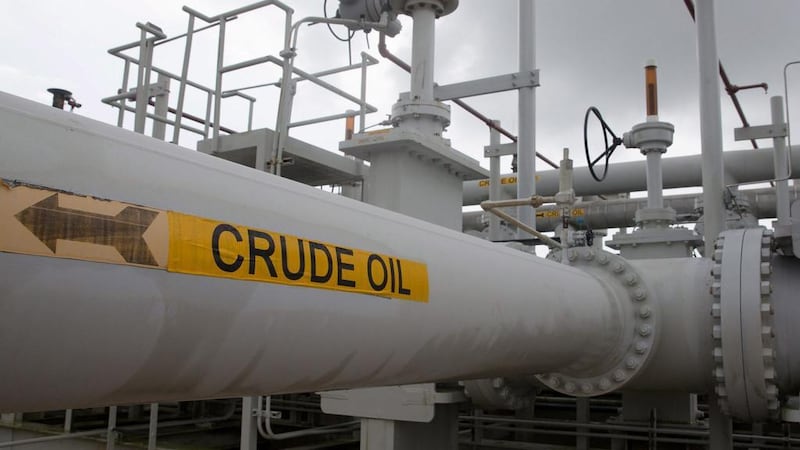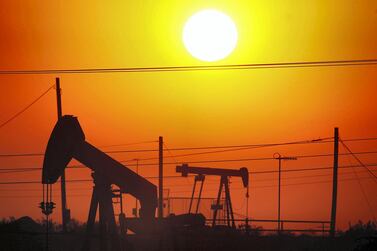Oil markets have been on a roller coaster this year, with prices recovering moderately in January, only to decline to half of these levels in March. Oil’s dramatic plunge didn’t stop there as the coronavirus pandemic battered demand.
A key benchmark, the West Texas Intermediate – a blend of US crude grades – took a dive below zero on April 20, trading at -$40 per barrel at one point. The month, which saw severe mobility restrictions globally to counter the coronavirus outbreak, was described as ‘Black April’ by Fatih Birol, executive director of the International Energy Agency.
With ground and air transportation at a virtual standstill and people confined to their homes to limit the spread of the virus, the price of oil was close to being worthless, endangering tens of thousands of jobs that depend on vital sector.
However, WTI took a 360 degree turn, rising to above $40 per barrel in today's opening session after Opec+ extended its 9.7 million barrels per day curbs by another month. Here's why oil remains so volatile and the factors behind its ebb and flow.
Demand-supply fundamentals
The biggest determinant of oil prices today is the mismatch between demand and supply. The 2014-16 price crash exposed a glut in the market from the spectacular increase in production from the US shale basins. At the same time, demand in many of the developed economies peaked. However, the developing world, led by the rising economies of China and India continue to drive crude demand growth.
With growth in China set to moderate and Beijing and New Delhi looking to add more electric vehicles on the road, their continued demand for more oil is expected to peak as well.
"Oil prices compared to other commodities are more volatile because there is much uncertainty on the supply and the demand side of oil,” said Garbis Iradian, chief Mena economist at the Institute of International Finance.
While supply corrections are already underway by way of an historic output cut pact endorsed by Opec and producers outside the group, there is still much uncertainty left in the markets.
“When we approach November-December, some experts say there could be higher cases of Covid-19. But overall, the second half of this year will be much better than the first half, so there is much uncertainty, and when you have a lot of uncertainty, [you have] volatility,” said Mr Iradian.
Technology and shale’s rise as swing producer
The rise of independent shale producers in the US heralded a new dawn for oil. Gone were the days when the markets worried about the stability of oil production in the Middle East and the various geopolitical risk factors associated with it.
Shale, proved far more responsive to oil’s fluctuations, with drillers adapting to the market environment by innovating new technology to help ride the storm in prices.
Amit Bhandari, a fellow of energy and environment studies at Mumbai-based think tank Gateway House, credits the evolution in upstream technology, notably hydraulic fracturing, as the reason for its stellar rise. He also compares its rise to the sentiment in the 1907s-80s when the discovery of Venezuelan heavy oil reserves were not considered “conventional oil” but later became more accepted as technology evolved.
"If the prices rise, enough research goes into extracting this non-conventional resource [shale]. If the price goes up, we’re likely to see a return of this happening,” he said.
What about geopolitics?
Geopolitics remained the biggest mover of the price of oil for decades. Any threat or disruption to the movement of crude tankers along the Strait of Hormuz would sound alarm bells for the oil markets, setting off a rally in prices.
However, simmering geopolitical tensions in the Middle East last year, which resulted in multiple attacks on tankers along the world’s most congested and only passage from the Arabian Gulf to the open ocean, as well as a stunning attack on Saudi Arabia’s oil facilities that temporarily wiped out 5 per cent of global supply, barely moved the needle on price.
Tensions between the US and Iran following Washington’s assassination of top Iranian commander Qassem Soleimani in January, did not quite cause the stir that traders were anticipating, either. Mr Bhandari believes that geopolitics stopped being a major factor fuelling oil’s volatility between 2010 and 2015, following shale’s gradual rise in 2009.
"If you go back to 2005 or 2006, even a fraction of that [recent events] would’ve have pushed the price of oil up by $10 to $20 a barrel – no questions asked – but in the current market, it was just taken in stride,” said Mr Bhandari.
Geopolitical sentiment is unlikely to play a significant role in the future, as long as shale producers are able to rise to the challenge of higher prices by adding more rigs and upping production.
"Sentiment used to play a big play when we had a big problem but it is no longer the case now,” said Mr Bhandari.








